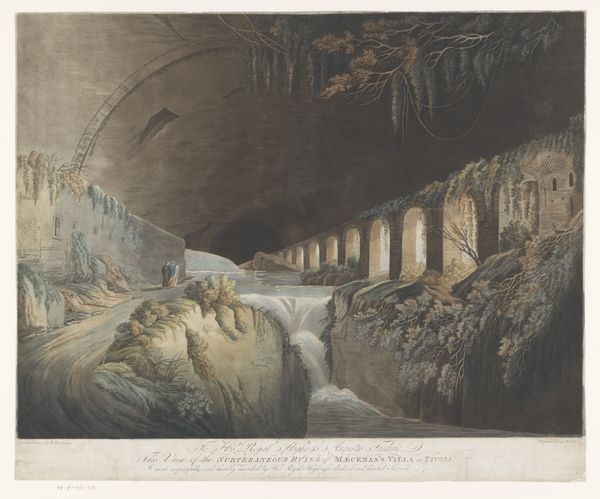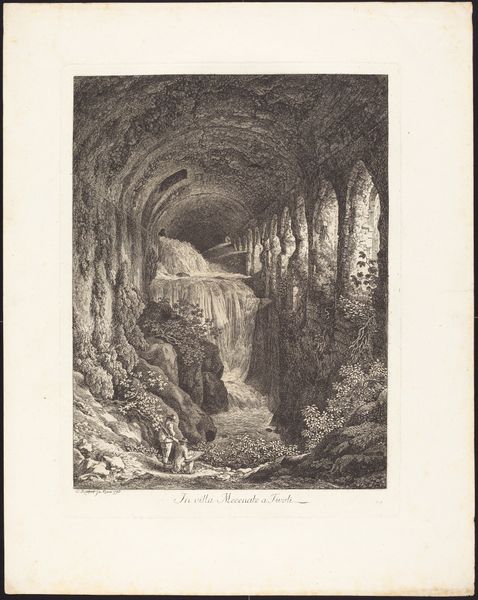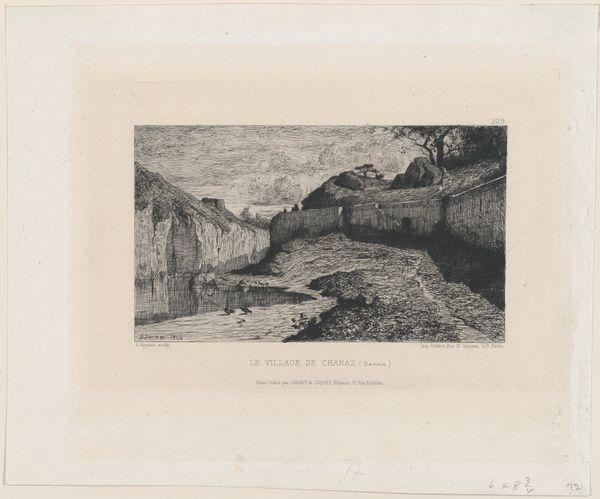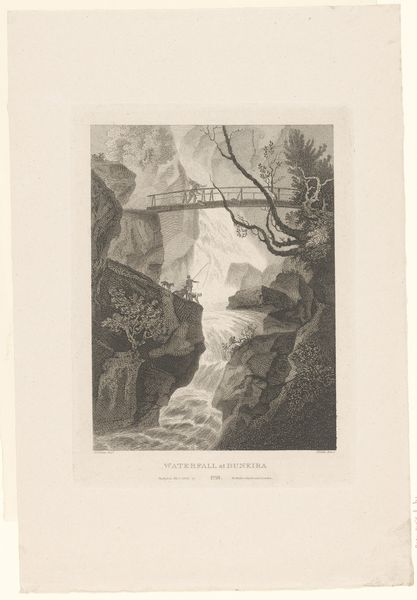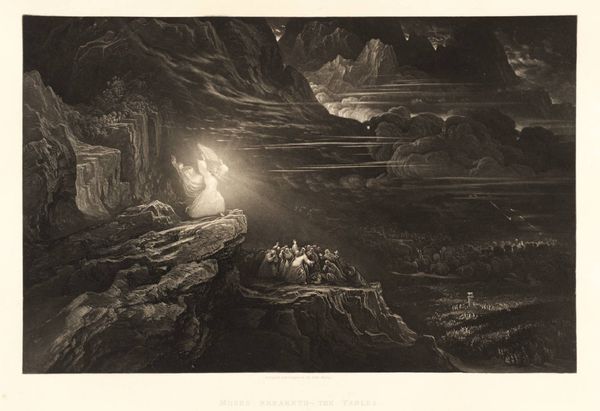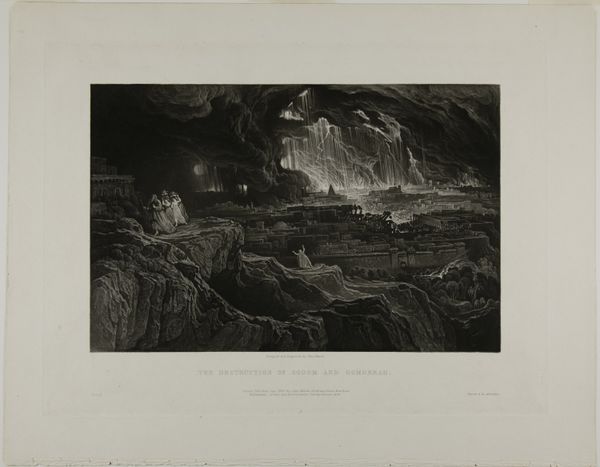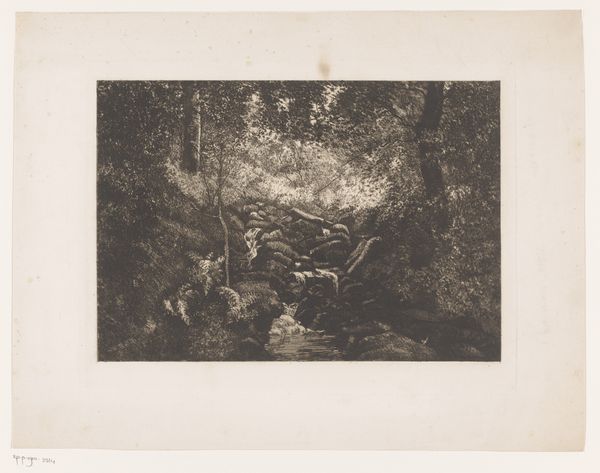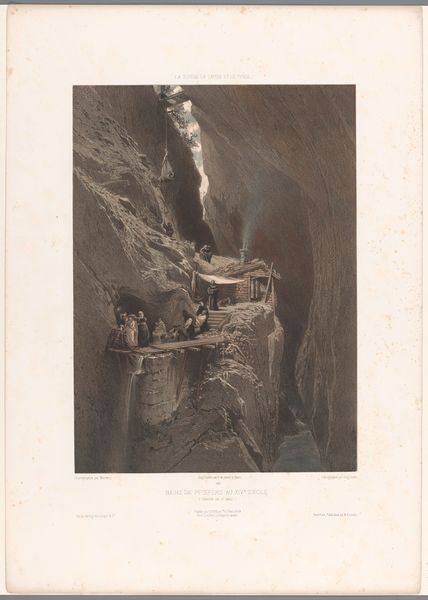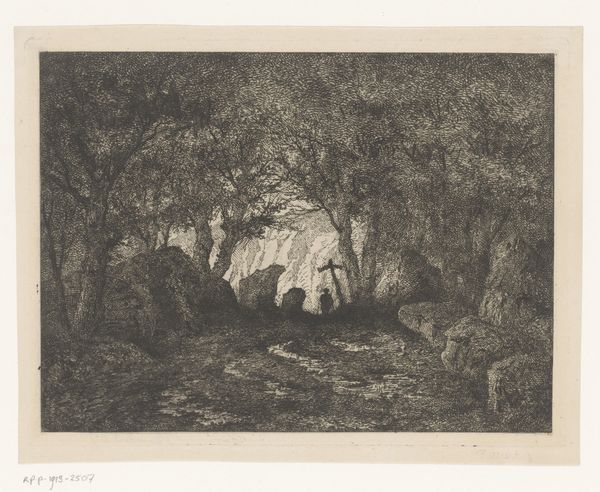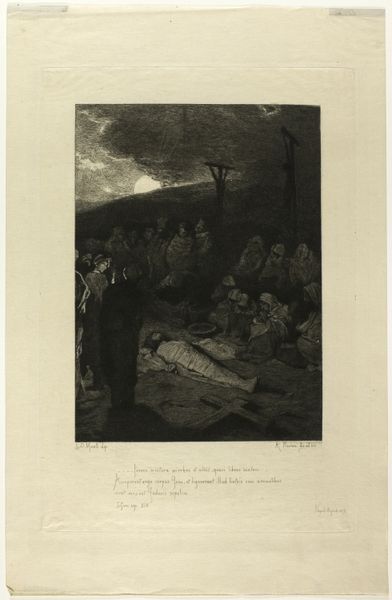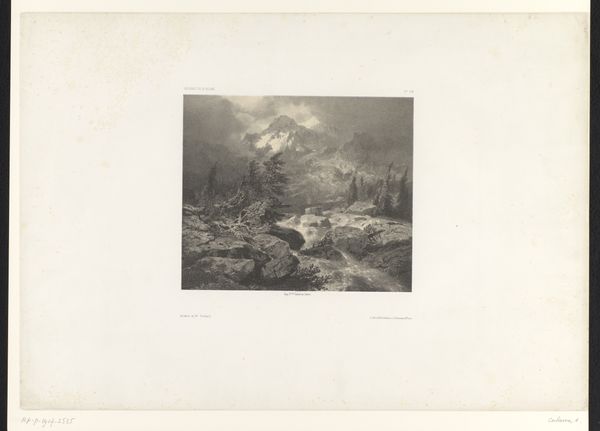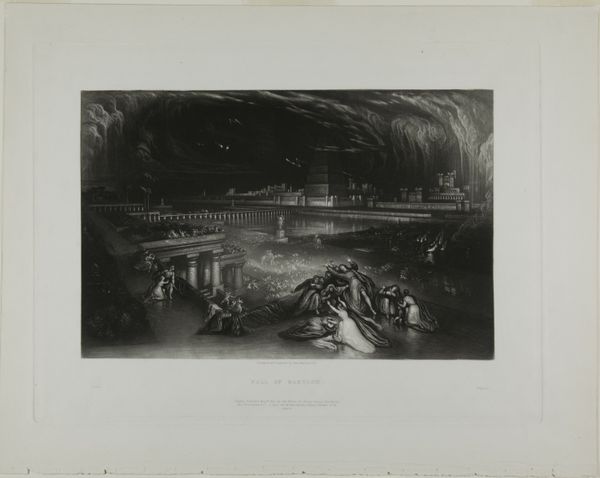
print, engraving, architecture
# print
#
landscape
#
romanticism
#
19th century
#
cityscape
#
engraving
#
architecture
Dimensions: height 492 mm, width 603 mm
Copyright: Rijks Museum: Open Domain
Francis Jukes made this aquatint, Gezicht op de ruïnes van de Villa Maecenas te Tivoli. Aquatint is a printmaking technique that simulates the effects of watercolor. The plate is treated with powdered resin, creating a textured surface that holds ink. This allows for a wide range of tonal effects, from deep shadows to subtle gradations. The printmaker needs skills in chemistry and meticulous attention to detail. Here, Jukes used these skills to capture the atmosphere of the ruins, emphasizing their scale and the play of light and shadow. Note the way the aquatint captures the rough texture of the stone and the lush vegetation growing over the ruins. Aquatint allowed artists to reproduce the effects of watercolor, creating prints that were both artistic and commercially viable. The labor-intensive process reflects a time when craftsmanship was valued, even in mass-produced images. So next time you look at a print, consider the materials and processes that went into its making. They tell us a great deal about the cultural values and artistic practices of the time.
Comments
No comments
Be the first to comment and join the conversation on the ultimate creative platform.
